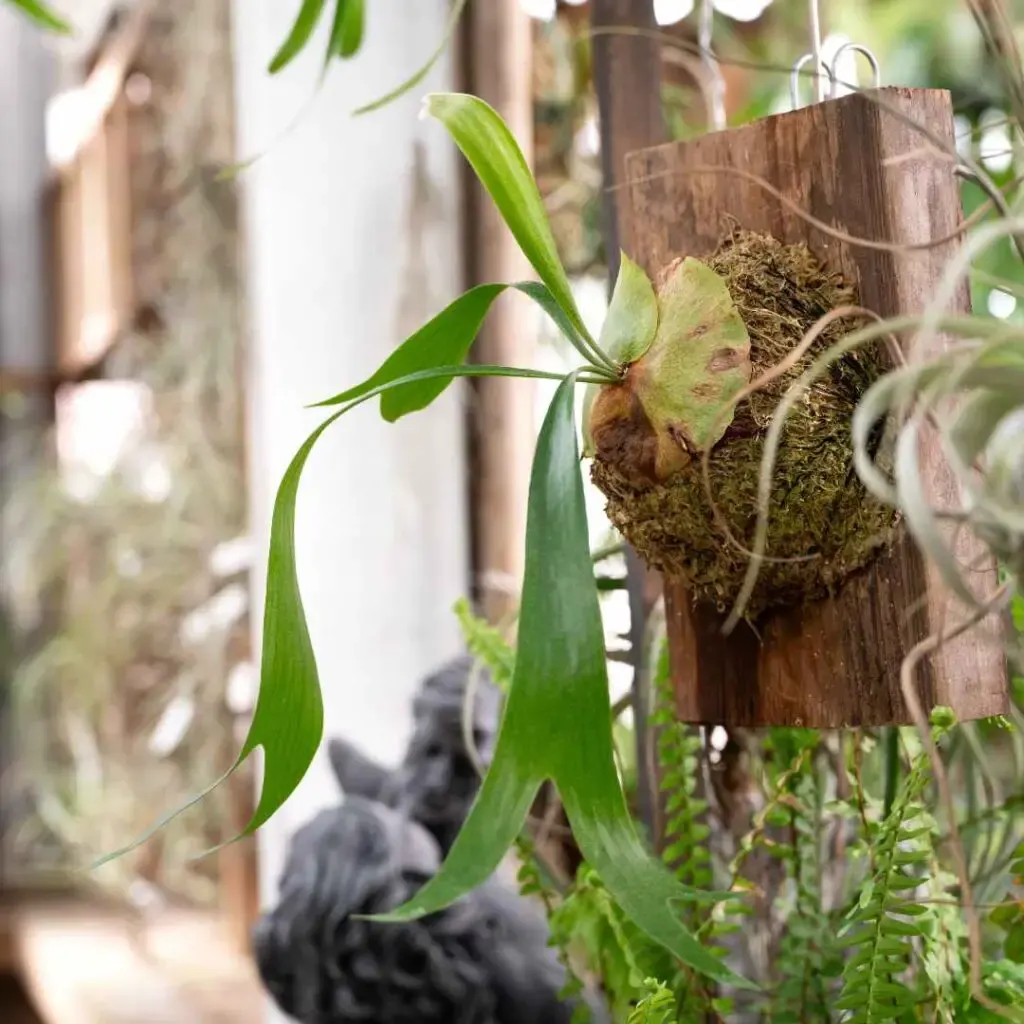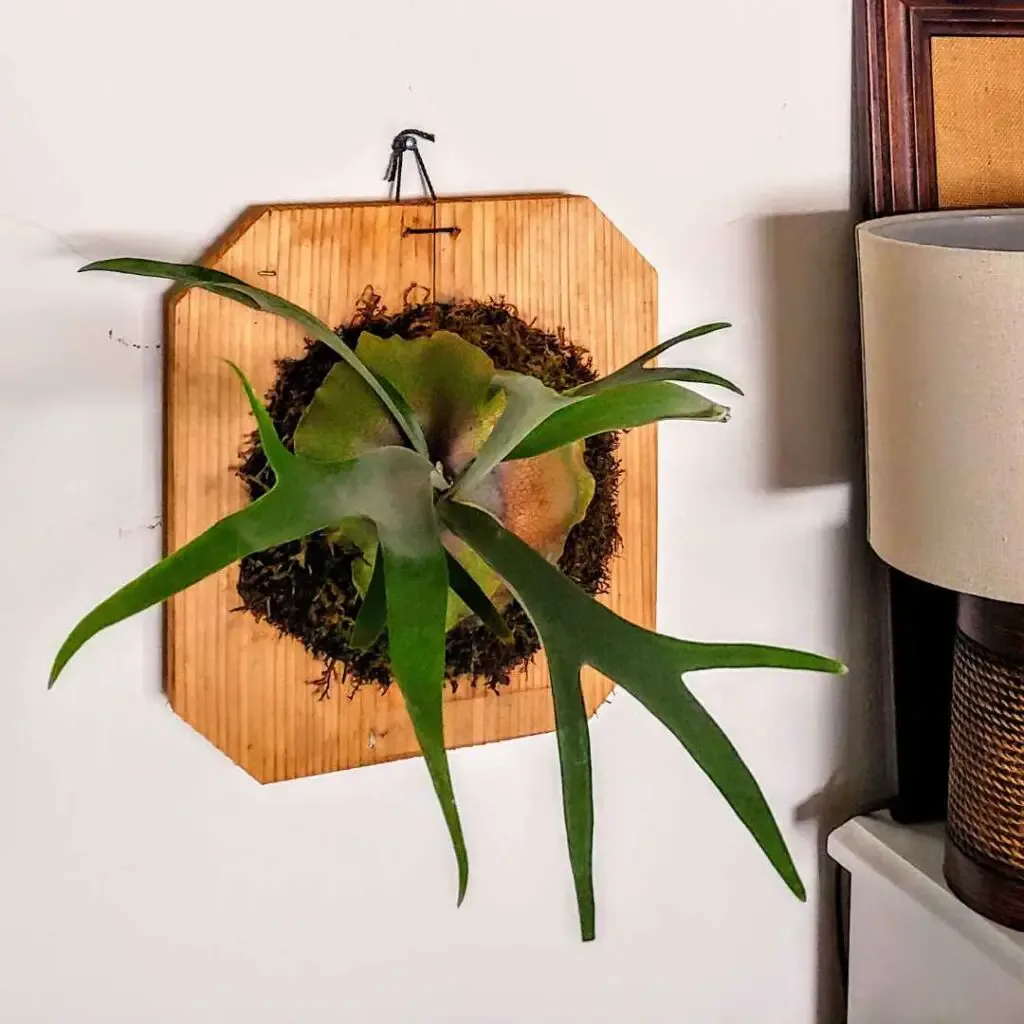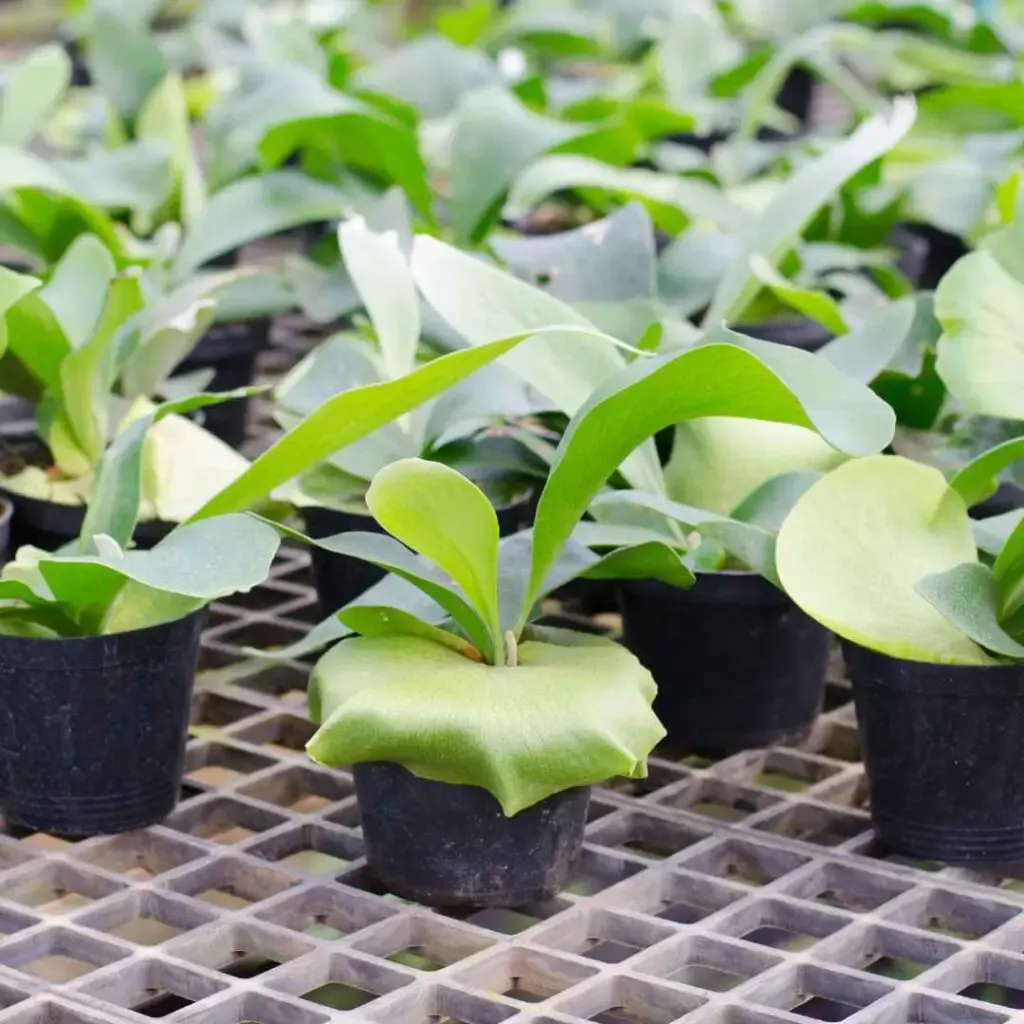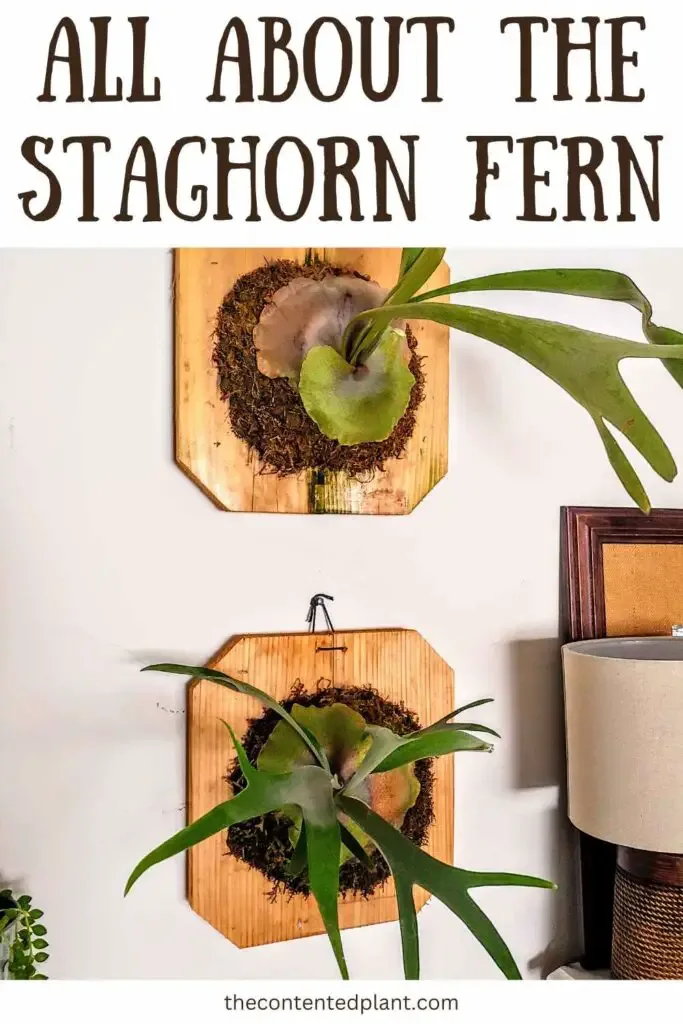Staghorn Ferns (Platycerium bifurcatum) are an extremely unique plant, and create a striking conversational piece in your home. They are considered an epiphytic plant, meaning they grow on the sides of other plants or objects, such as trees, for support. These plants stand out due to their two distinctive and very unique leaf shapes. The first is a flat leaf referred to as ‘shield fronds’ that protect the root ball structure. The second are the slim green fronds that are pronged, and resemble deer antlers; giving this plant it’s second name, the Elkhorn Fern.
Staghorn ferns are considered fairly difficult to grow and care far, so we don’t recommend them for beginner plant enthusiasts. Due to their very unique growing habits, particular water and humidity requirements, and the need for remounting to support their growing weight over time; these ferns need to be cared for by an experienced hand.

These ferns can grow to 3 feet in length from their fronds when healthy and thriving, and the weight can become considerable over time. In the wild they have the ability to grow even larger. As a member of the fern family they thrive in warm, humid climates with dappled light that mimics the protection they receive from tree canopies that they grown under.
Native to Asia and Australia, they are considered invasive and should be grown with care especially in Florida and Hawaii where they can easily adapt due to the warm climate.
Mounting Staghorn Ferns
Arguably the most unique trait of the elkhorn fern is the fact that once it is well established and matured, it needs to be mounted on a board or another mounted organic material. This will be a reoccurring need throughout the life of the plant, which if healthy and strong can last decades. The process and tools needed to mount staghorn ferns are as follows.
- You will need peat, compost, moss, or another organic material for the root ball to set into.
- The fern will need to be secured into the material using fishing wire or a similar tool, and attaching it securely to a chemical free board or strong bark piece.
- The plant will then need to be mounted to a wall or door frame where it will grow without needing any additional soil or securement.
- As the fern grows, the fronds will mature to cover and protect the root ball and cover the fastening attachements.
- These ferns grow very slowly, so although remounting will need to happen eventually, it will not be a frequent need.

The Staghorn Fern Profile and Care Guide
| Sun + Light | Partial, dappled light similar to tree shade coverage |
| Watering | Frequent to soak the root ball fully |
| Temp + Climate | High humidity is essential, and temperatures between 50-100 degrees F |
| Maturity | 2-3 feet tall, 2-3 feet wide when healthy and fully grown which is a long process |
| Soil | Acidic and minimal once mounted |
| Fertilizer | Once monthly to maintain a strong and healthy fern |
Watering Mounted Staghorn Ferns
Another challenging aspect to the care of these ferns are the watering needs and how exactly to execute watering once they are mounted vertically. Proper and frequent watering is absolutely essential to a thriving and well established elkhorn fern.
- Water once weekly in warm climates and during the summer months, and once every two to three weeks otherwise.
- For mess free watering take down the mounted plant and place in a large sink filled with water, allowing it to soak for at least 10 minutes until the roots are fully saturated.
- Give it time to drip dry before rehanging.
- Due to the frequent watering this plant requires, we don’t recommend mounting directly to a wall with screws, rather, use a rope or hooks and attach it to anchors for easy watering.
- Allow the root ball to dry out between watering, otherwise the risk of root rot and fungal growth is likely.
Propagating Staghorn Ferns is Done Through Division
The easiest and most reliable way to propagate a healthy staghorn fern is through root division. Dividing the plant into ‘chunks’ that include a small root ball and strong leaves, then planting in small containers with peat and compost to mature and strengthen before mounting.
It will take time for the offshoots to mature, so don’t get discouraged if the process seems long. These are slow growing plants and require patience. Constant warmth and dappled light are very important during this time and should be prioritized accordingly.
Propagation takes practice, and can prove challenging for even experienced gardeners, so it may take a few tries to successfully propagate your elkhorn fern.
If you are looking for some tips on tools and methods of propagation through division, check out our video tutorial below.
Regular Fertilizing is a Necessary Aspect of Staghorn Fern Care
Unlike most other plants, this fern will require constant fertilizing almost year round. They are very slow growing and fertilizing will help strengthen the fern and encourage growth at a slightly faster rate.
Feeding it a well balanced, water soluble fertilizer will need to be done monthly during spring and summer which are the active growing seasons. You can decrease this to once every other month during the dormant seasons of fall and winter.
Should I Source a Young Fern or an Established Mounted Fern?
The choice of purchasing a young fern or a mature mounted fern comes down to personal preference mostly. Both are available for purchase through many online websites and shops, and it is possible you may find some from a local nursery or garden center; though it’s most likely you will find young starts for purchase.
If you cannot source a staghorn fern locally, Etsy is another option that has proven reliable for many folks including us. We love that when you purchase through Etsy you are supporting small businesses and hobbyists. Be sure you do your research to ensure you are going through a vendor that is knowledgeable and reliable.
You can purchase mounted staghorn ferns through Etsy, just click here!

What are Some Common Problems with Elkhorn Ferns?
These ferns can become infested by common plant pests, as well as fungal spores from too much humidity. It is important to inspect the fern when you are watering, and take action quickly to prevent spread or infestation.
- If you notice black spots it’s most likely fungus. Treat with neem oil or an anti fungal spray
- Wilting fronds, or fronds with blackening tips is a sign of over watering
- Shield fronds will occasionally turn brownish. This is normal, they should not be removed.
- Brown growth on the underside of the antler fronds is normal and should not be disturbed. These are reproductive spores.
- White, dust like coverage on the fronds is normal and needs to be left alone. This protects the fern from harsh sunlight and drought.
The staghorn or elkhorn fern is a unique and captivating plant to include in your collection if you have the right environment, the time and knowledge to care for it, and take the steps to be responsible about growing it as it is considered an invasive species.
If you are looking for other ferns that are a bit more traditional in their look and growing habits, be sure to check out these others that we love and have featured on the blog.
- The Kimberly Queen Fern-A regal focal point for your home or office
- The Boston Fern-A beautiful hanging option
- The Japanese Painted Fern-With silvery purple fronds its a gorgeous showpiece
- The Blue Star Fern-Similar leaves to the Staghorn, but a traditional potted option
Follow Us:
Find us on YouTube, Instagram , Pinterest and TikTok! We love to Plant chat. We also comment, like and occasionally share your content to our daily stories. We’d love to see your plants. Share your joy in your houseplants. Happy Planting!

